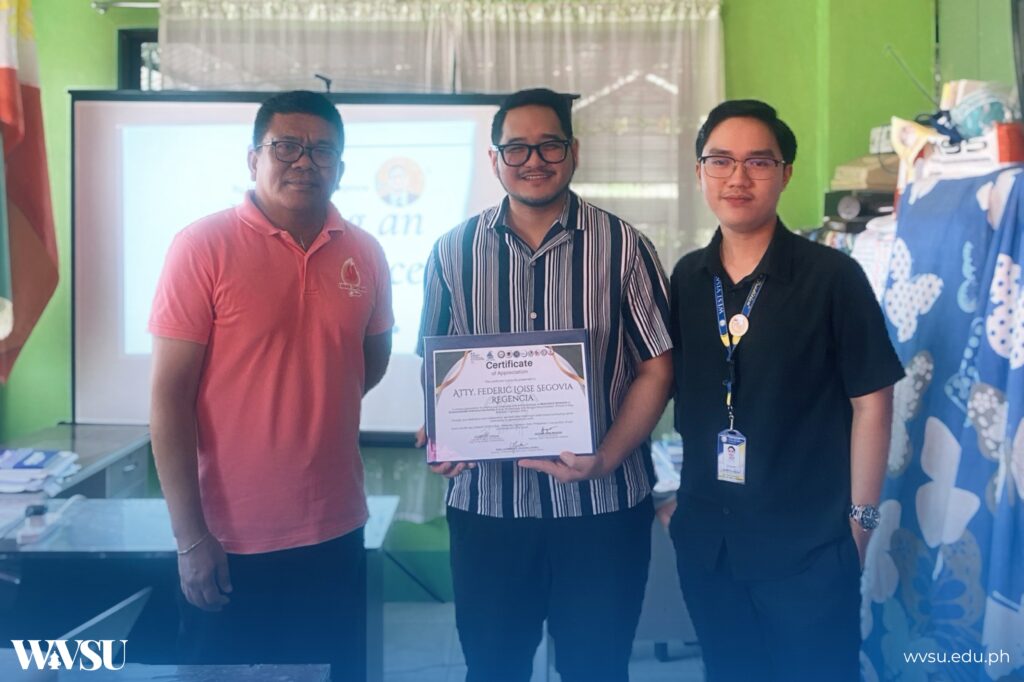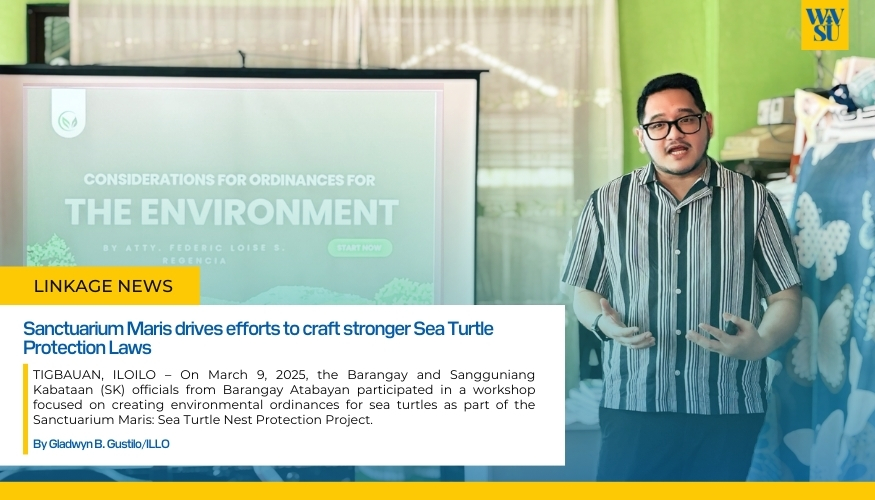TIGBAUAN, ILOILO – On March 9, 2025, the Barangay and Sangguniang Kabataan (SK) officials from Barangay Atabayan participated in a workshop focused on creating environmental ordinances for sea turtles as part of the Sanctuarium Maris: Sea Turtle Nest Protection Project.
The workshop was organized by the West Visayas State University (WVSU) DagYoung Student Ambassadors, in collaboration with several key partners, including the Positive Youth Development Network (PYDN), the Department of Environment and Natural Resources (DENR), the WVSU Federated Student Council (FSC), and the Development Communicators’ Society. Funded by the Embassy of France to the Philippines and Micronesia, it further highlights the importance of international support for local environmental efforts.
Atty. Federic Loise Segovia Regencia, a faculty member from the WVSU College of Law, shared his expertise on local legislation and the role of ordinances in community-based environmental protection. Atty. Regencia led discussions on the process of drafting ordinances, particularly focusing on the creation of a Sea Turtle Nest Protection Ordinance. He emphasized that for the success of the Sanctuarium Maris project, it is essential that the local government unit (LGU) pass an ordinance that legally protects sea turtle nests in the area.
During the workshop, Atty. Regencia explained the key differences between ordinances and resolutions. He clarified that ordinances are laws passed by the local government that have the force of law, while resolutions are temporary measures that express legislative sentiment. This distinction is crucial for ensuring that environmental protection efforts, such as the proposed sea turtle protection ordinance, are legally binding and effective in the long term.
Atty. Regencia also outlined the process involved in crafting local ordinances, emphasizing the importance of public consultation and community involvement at every stage. He highlighted the importance of holding multi-sectoral consultations to gather the concerns and needs of the community, which will then inform the creation of the legislation. Once the ordinance is drafted, it must undergo several steps, including a first reading, committee deliberations, public hearings, and multiple readings before being passed into law. Each of these steps ensures that the ordinance is well-vetted and reflective of the community’s needs.
In addition, Atty. Regencia discussed the key considerations for creating effective environmental ordinances. He stressed the importance of having a clear legislative purpose, ensuring compliance with national and international environmental laws, and establishing regulatory mechanisms to enforce environmental standards. He also addressed the need for public awareness campaigns to engage the community in the process and encourage support for the ordinance.
For the officials of Barangay Atabayan, the workshop served as a critical step toward enacting meaningful change for their environment. By creating ordinances that safeguard sea turtle nests, the community is taking responsibility for its local ecosystem and contributing to the broader goal of marine conservation.
By Gladwyn B. Gustilo/ILLO





